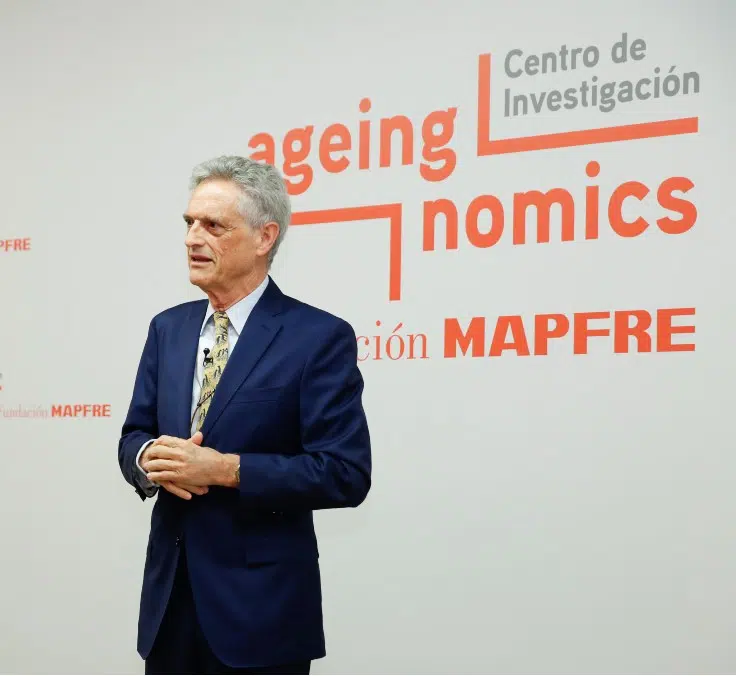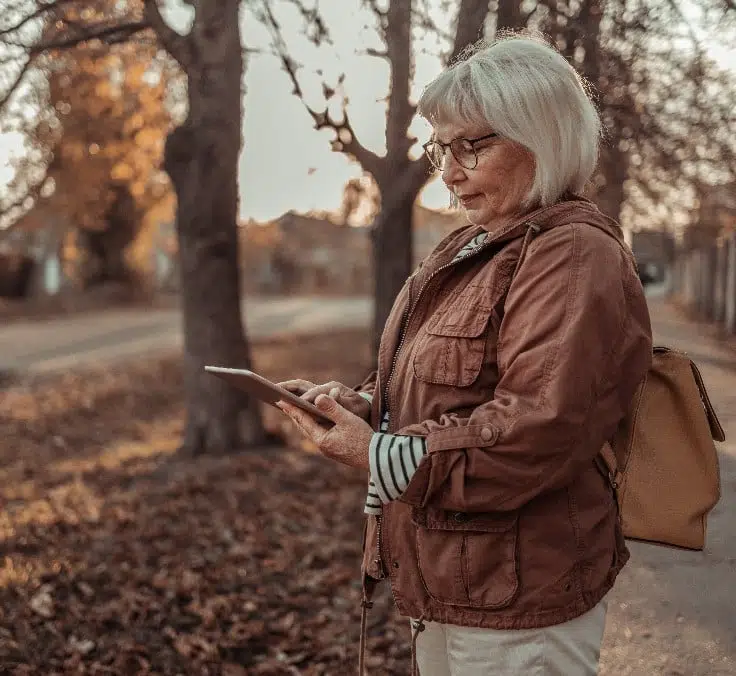SUSTAINABILITY| 08.02.2023
Digital literacy figures have doubled amongst those aged over 55 in Spain
According to figures from the World Bank, in the fifty years between 1970 and 2020, average global life expectancy increased from 58 to 72, creating a new segment of the population that, thanks to new developments in health and well-being, remains active in areas such as employment, leisure and consumption.
This group is known as the Silver Economy or senior economy and has been detected by institutions such as the World Economic Forum, the OECD or the European Commission, gradually placing a greater focus on this collective. However, in countries like Spain and Portugal, there had been no significant impact on public opinion until the past five years.
Against this backdrop, in December 2020, the Ageingnomics Research Centre was launched by Fundación MAPFRE. Its aim is to study and promote the so-called “silver generation,” consisting of those aged between 50 and 75: people who are healthy and enjoy a good quality of life to continue contributing to society with their talent, social work or consumption capacity.
In cooperation with several academic institutions, intense public activity has been undertaken since then: articles, media interviews, seminars or a cycle of debates, which, since 2018, has allowed us to reflect on the opportunity to get older healthily in areas as diverse as mobility, health, entrepreneurship, social innovation and finance.
One such report is the 3rd Senior Consumption Barometer, prepared in October 2022 in association with Google Spain. This study revealed the habits of the more than 15 million Spaniards aged over 55. Here is a ten-point summary of the complete study, which is available for public consultation.
The 10 keys for Senior consumers
- Their savings capacity is decreasing
Although most of the population that belongs to this generation has more than one breadwinner at home, there has been a downward trend since 2020 in terms of their savings capacity, with close to half of the population saying they are unable to save.
- They feel uncertain about the current economic situation
In the current context, there has been an increase in perceived economic risk, in particular amongst older people, especially on account of the energy crisis and the cost of energy, as well as the price of food and basic necessities. These factors are the main causes of the decrease of the savings capacity we have seen and, therefore, a source of insecurity and pessimism.
- Their importance as a network of family support has increased
In countries like Spain and Portugal, as well as others, older people are considered as people who help their families, either financially or as care givers, as well as amongst their immediate social network. The increase of the population in Spain that helps their family members financially, from 43% in 2021 to 63% in 2022 is significant, while in Portugal it remains slightly above 40%.
- They believe reducing spending health or property would reduce their quality of life
Health and property remain the two main pillars of investment and expenditure when considering the factors that make up their quality of life. Therefore, most of the senior population would first eliminate outgoings on household items, clothing or technology if necessary.
- They see property as an economic tool for improving their well-being
For the most part, seniors own the property they live in and only 25% have an existing mortgage or loan. As a result, most see their current property as an asset for improving their quality of life.
- They have no intention of moving property in the future
Even taking the above data into consideration and aware that the tendency is to remain in the same property forever, there has been an increase in the predisposition to live in retirement homes or supervised apartments, as well as in coliving spaces.
- Their digital literacy is improving
To put this into perspective, since 2017 the number of digitally literate seniors has doubled, with eleven million users in the age bracket studied with fully independent mobile use. The pandemic has undoubtedly sped up this trend. Not only do they use technology to remain informed, they also extensively use social media, participate in online shopping, travel planning, etc.
- They care for their diet and employ technology when caring for their health
Diet is the main way in which this generation cares for their health, more so than sport or medical check ups. They are becoming more aware of healthy habits and they often use digital resources (telemedicine) or receive remote assistance.
- They continue to travel for recreation and tourism
Although the intention to travel for recreation and tourism is down on 2021, most of the senior population expects to travel for recreation or tourism over the coming year.
- They have no desire to extend their working life
The percentage of the population that would be willing to extend their working life stands at just 15%. Generally, those who are most willing to do so are older people in the study bracket and those with a higher education.
A capable and valuable generation
In conclusion, this barometer has demonstrated that the characteristics of today’s silver generation is far removed from typical stereotypes. They are a capable generation (interestingly, you are much more likely to find people willing to dabble in home maintenance among those over 55 than in other age groups), which adapts to new circumstances (with their digitalization data paying testament to this), is informed, environmentally aware and with spending capacity and able to help.
The role of Ageingnomics is critical in disseminating a real, positive image of seniors in the global economic fabric. This must lead to new employment, wealth, entrepreneurial initiatives, as well as bearing the needs of this group in mind.
RELATED ARTICLES:





